Mid-Spring Garden Upgrades
This week I made some moves to upgrade my garden. I’ve been agonizing over this for months, and for better or worse, I finally pulled the trigger. I’m happy to share the upgrades with you, but first, (as always), I need to share a few observations. My steps bed, the one that leads from the driveway down to my patio, has, to my mind, always been a bed that is supposed to introduce visitors to the wonders of the gardens below. And while I’ve wanted it to be a spectacular introduction, up until this year it has been anything but. In fact, I’ve often described the bed to the right side of the steps as “Death Valley,” or something close to it. No matter what I’ve tried to grow there, it has died. But this year has been different. Everything in my garden is growing! I don’t know what to do with myself. I’m ruining my brand as the gardener who kills everything, and I’m not sure what to do about it.
My steps bed project for this year is all about turning the area under my arborvitae trees into a planned part of the landscape. It was cleared out by my tree guys when I asked them to trim the arborvitae away from my driveway fence. Then my landscape guys dutifully mulched the area because when they see an open space in the garden, that’s what they do. I want you to know, from deep in my heart, that planting under arborvitae sucks. The leaves on these trees are pointy and sharp, and when you try to dig under there you are sure to get pricked by leaves, or dead branches, or whatever. Dragging a shovel under these branches to dig out spaces for your new plants, when you are bent over trying to avoid tree limbs and can’t get any leverage while digging in soil that is filled with dead branches and old tree roots, also sucks.
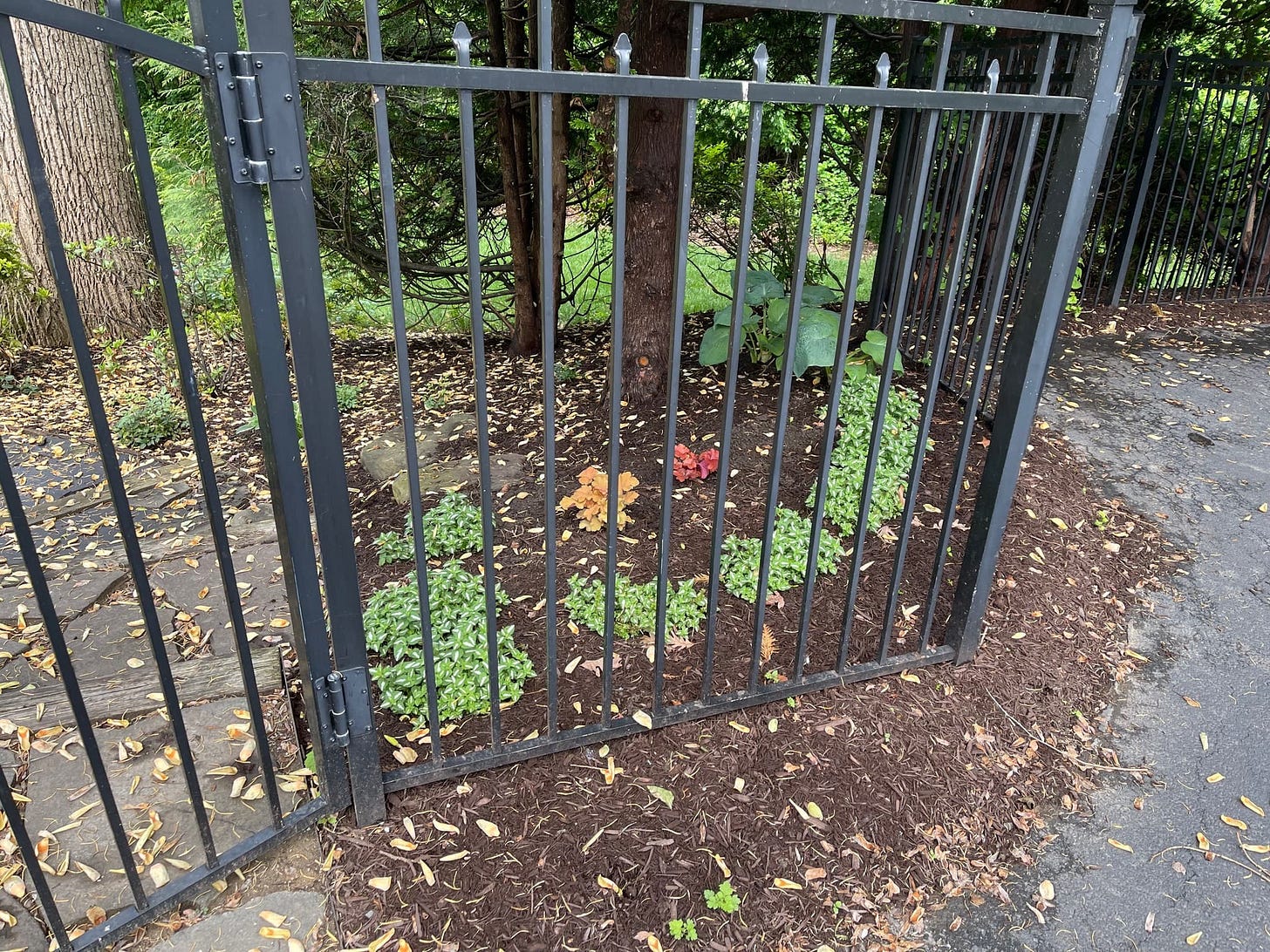
You might note that the changes I’m making are not exactly taking place during the “early spring” time frame recommended by almost everyone. Here it is May 14 and I’m finally getting plants in the ground. (To be specific, experts recommend waiting until after the last frost of the season.) I’m not pleased with myself. I might also add that it is highly recommended to dig in your garden when the ground is wet. In fact, planting in the rain is much easier because the soil is easier to dig. I would like to say that I’ve tried gardening in the rain. It isn’t pleasant, unless you like getting cold and wet. We’ve had more rain than usual this season and that accounts for part of the delay, along with health issues and other stuff. I would be outside right now planting my coral bells in my ostrich fern bed, but it’s raining. Maybe tomorrow.
So, the three beds I’m upgrading this week are the steps bed, the ostrich fern bed, and the astilbe bed. Here’s what I’m doing in each.
My neighbors generously offered me some of their ground cover, called lamium, to create an edge along the driveway fence at the upper right of the steps bed. I wrote about ground cover last week but forgot to mention two of my favorites, spotted dead nettle lamium and plumbago. Lamium checks (almost) all my boxes: It grows well in shade, it spreads in a manageable way, and it’s beautiful, with variegated spotted leaves and lovely pink flowers. The only issue? It is listed as an invasive plant, so if you’re going to add it to your garden, you should use it in an enclosed space. I have many new friends who are naturalists in their approach to gardening, and this would be a deal killer for them. Next, I dug up one of the elegans hostas that grow under my back patio and divided it into four plants that continue the border under the arborvitae. (Did I mention it sucks to plant under arborvitae trees?) I should probably add here that elegans hostas are huge, with monstrous fronds several feet in size. They look really cool as a background color and texture in your landscape. I was surprised to discover that if you divide plants you already own and plant them in your garden, it’s free! Who knew? Lastly, I planted two coral bells with pretty red and yellow colors to fit behind my lamium and add some different hues to the bed.

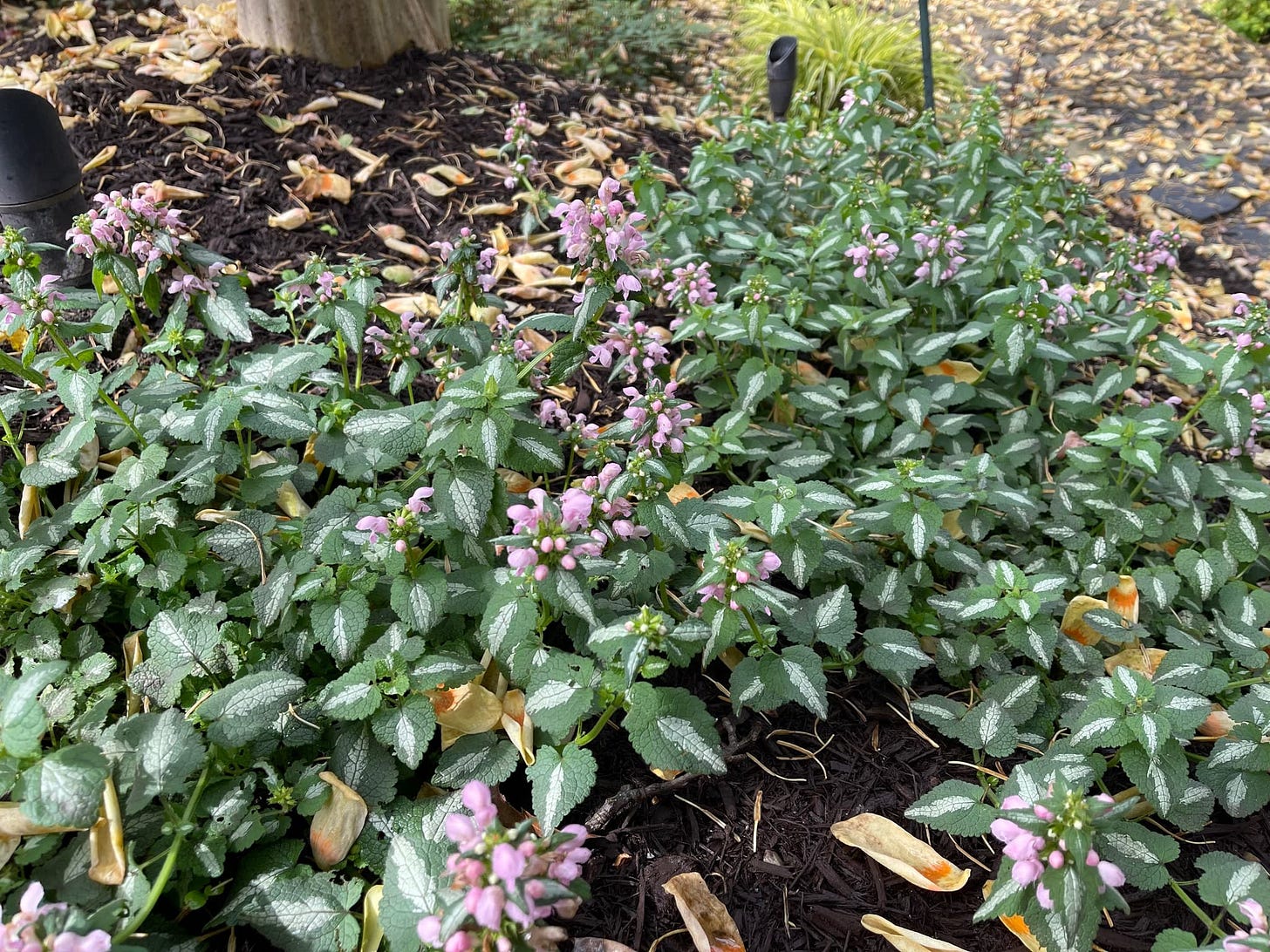
On the left side of the steps bed, looking down to the patio, I’ve already done a lot of planting, but I’ve been wanting to add another Samurai toad lily near the fence. This part of the bed is directly under my crepe myrtle tree. I should mention that I really don’t like digging under trees, in case I’ve missed commenting on it before.
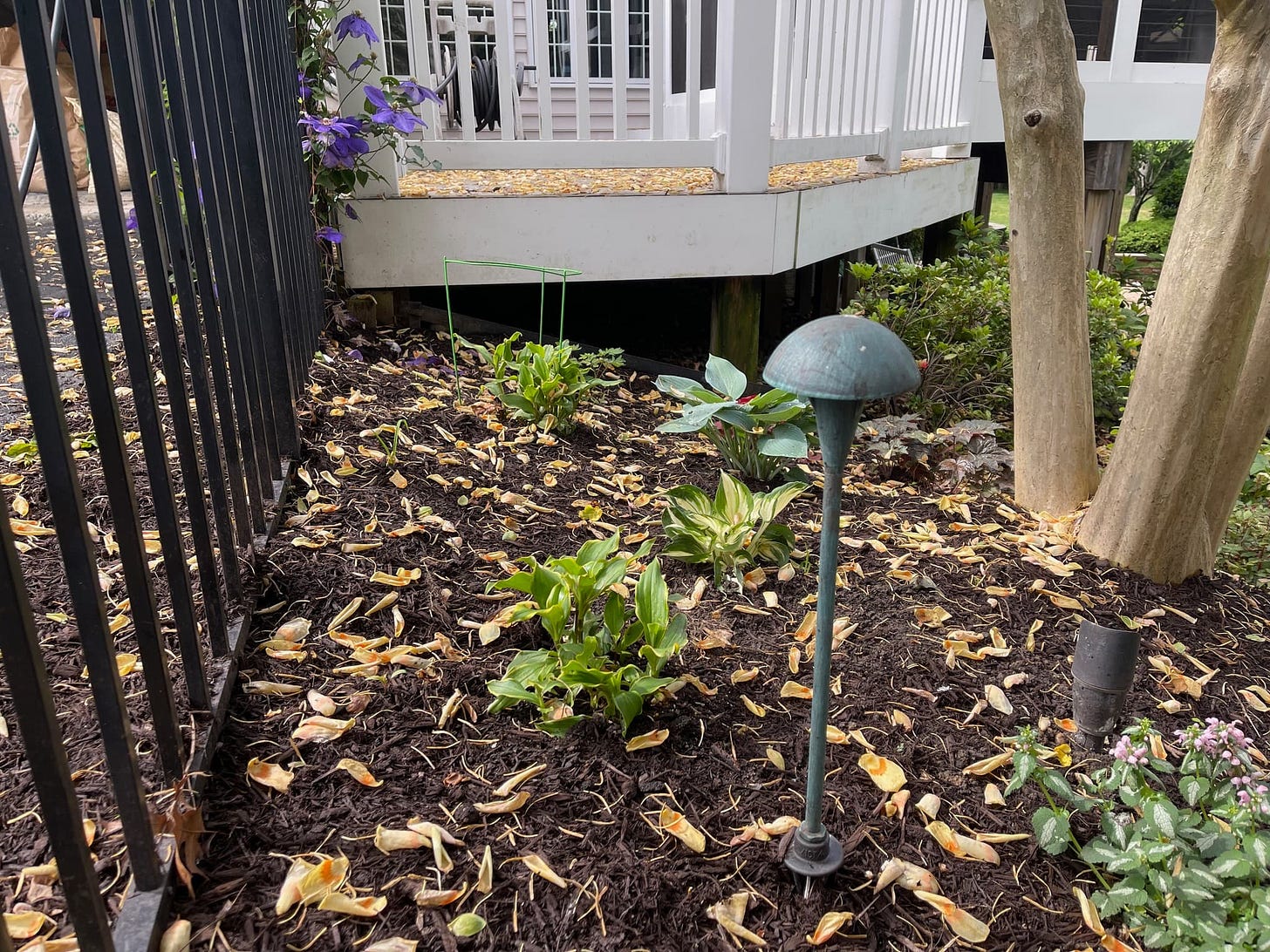
The ostrich fern bed is a spectacular part of my backyard garden. The ostrich ferns provide a bright green backdrop for the Jack Frost brunnera (runner-up for the Ken Solow Plant of the Year award last year) and coral bell heuchera plants that share this space. The problem is that the coral bells in the bed are a dark purple(ish) color. They form a great backdrop for more colorful plants, but by themselves they look kind of boring against the dark brown mulch of the bed.. The easy solution was to plant a couple of brightly colored coral bells next to my current mature plants to set off the colors. It looks great.
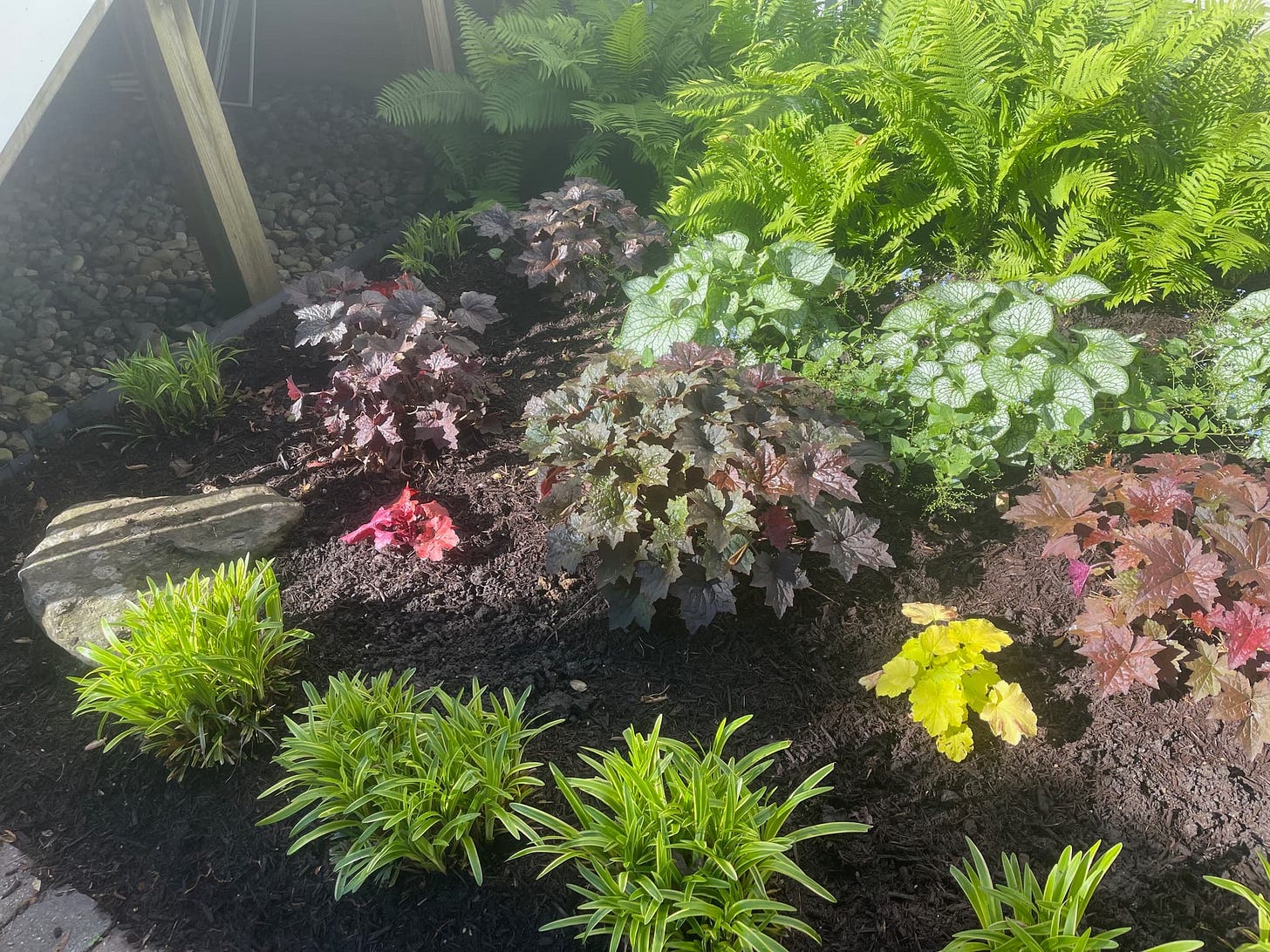
The last bed I tackled is my astilbe bed, where the problem was lopsidedness. The bed was full of plant material on the right side as you looked at it from the front but was lacking plants on the left. This bed suffered from a lack of color during the summer after the astilbe finished blooming. And, as I’ve mentioned more than once, there is only so much bright red color you can take in any single bed. Some contrast was much needed. After a season’s worth of research, I think I found an answer in a ground cover called golden star, or if you want to impress your friends, Chrysogonum virginianum. Unlike lamium, golden star is a native, low-maintenance ground cover that forms a spreading mat of yellow flowers in sun or shade but doesn’t spread aggressively. I recently wrote about a ground cover called creeping Jenny, which grew out of control in a frighteningly short period of time in this bed, so I’m hoping golden star might fit the bill for a manageable ground cover. I’m looking forward to seeing some yellow along with the red from the astilbes this season. (Note: I didn’t find golden star in my research this winter. I found it while kicking around the nursery and looking for some ideas. Not the way I usually do things, but worth mentioning.)

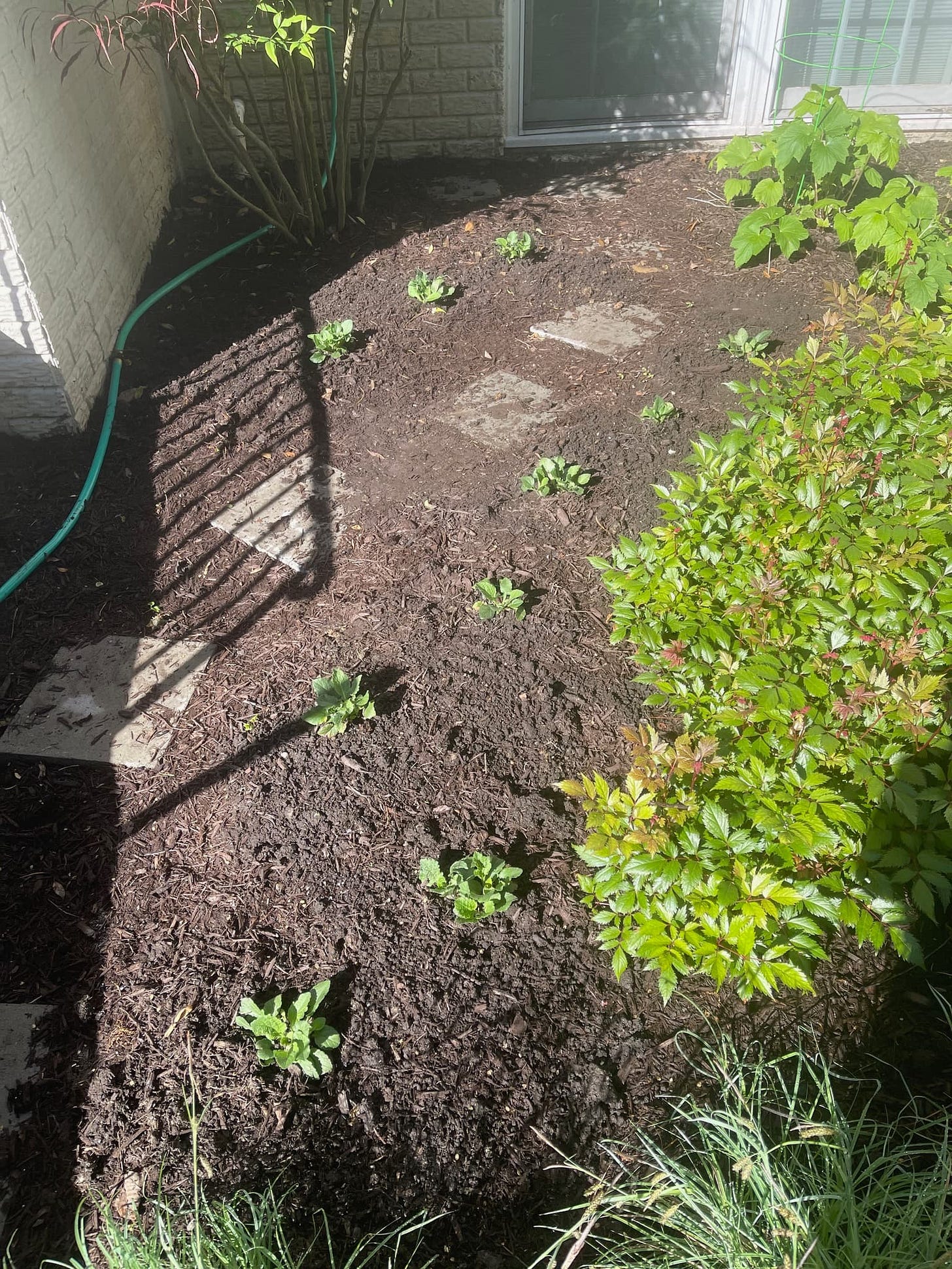
The tab for (1) forever red coral bell, (1) citronelle coral bell, (1) caramel coral bell, (10) golden star, (1) Samurai toad lily, and one bag of leaf compost, came to $173. I realize this might seem insanely expensive for some, but if I can keep them alive, I will enjoy these plants for years to come. And I can scratch this upgrade off my “to do” list for this year and begin to focus on several other areas of the garden that need a little help as we continue through the season.
Next week I’m going to share some photos of plants that I was sure were dead but have reappeared this spring. These plants are, by definition, nominees for the Ken Solow “Comeback of the Year Award,” a momentous achievement in any plant’s life. Be sure to join me next week.
As always if you enjoy this content, please feel free to share it with family, friends or associates by clicking on the Share button. If you are interested in previous posts, you can see all the archived content by clicking on my small picture at the top of this post.



